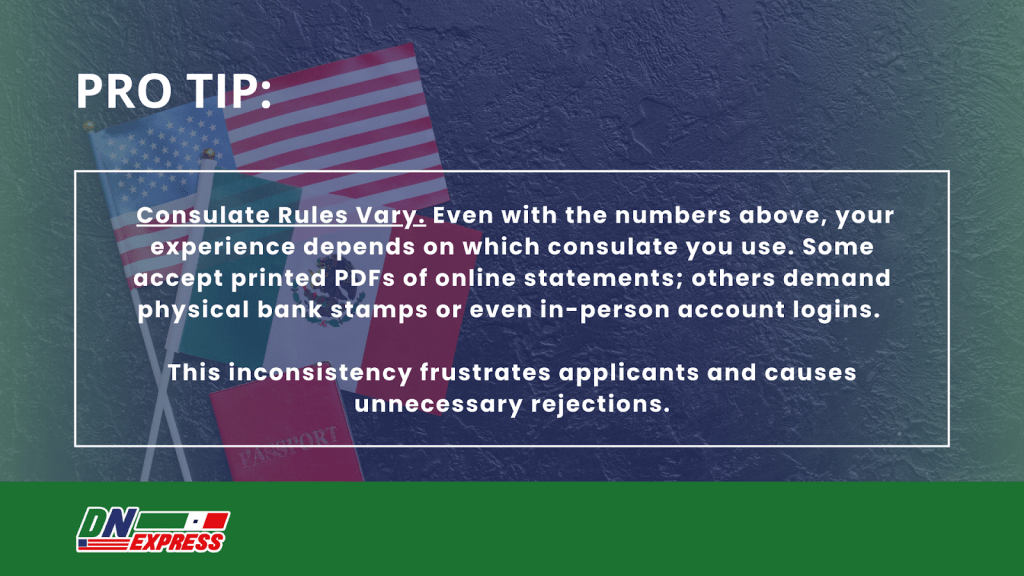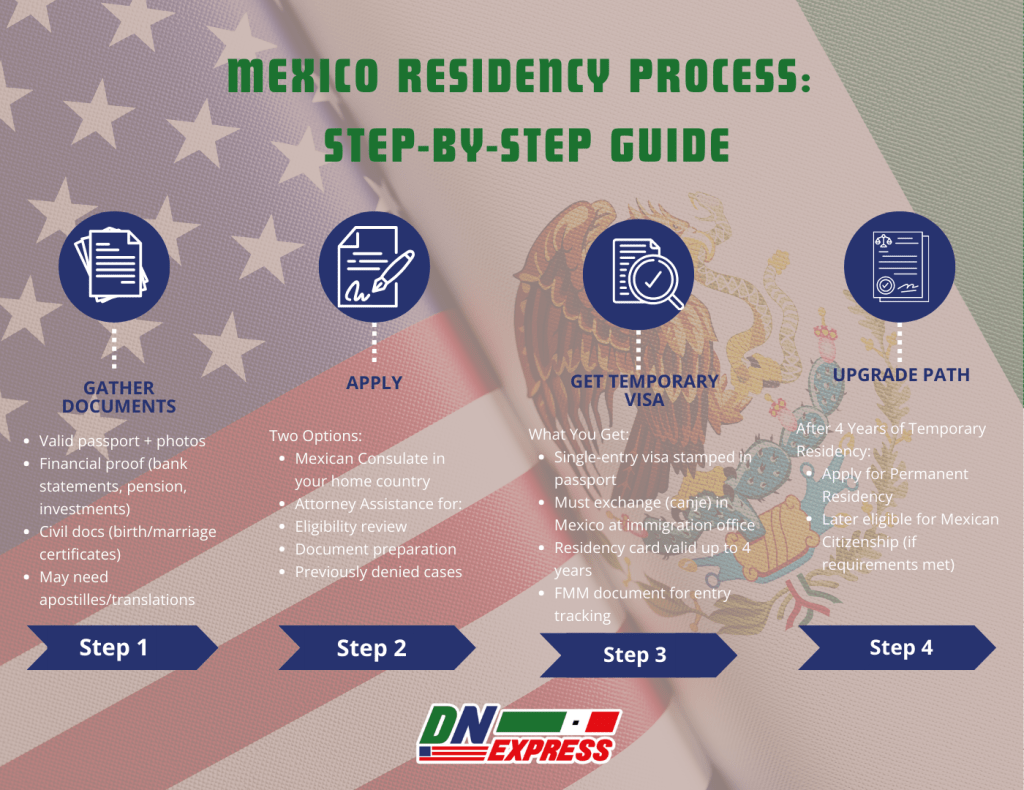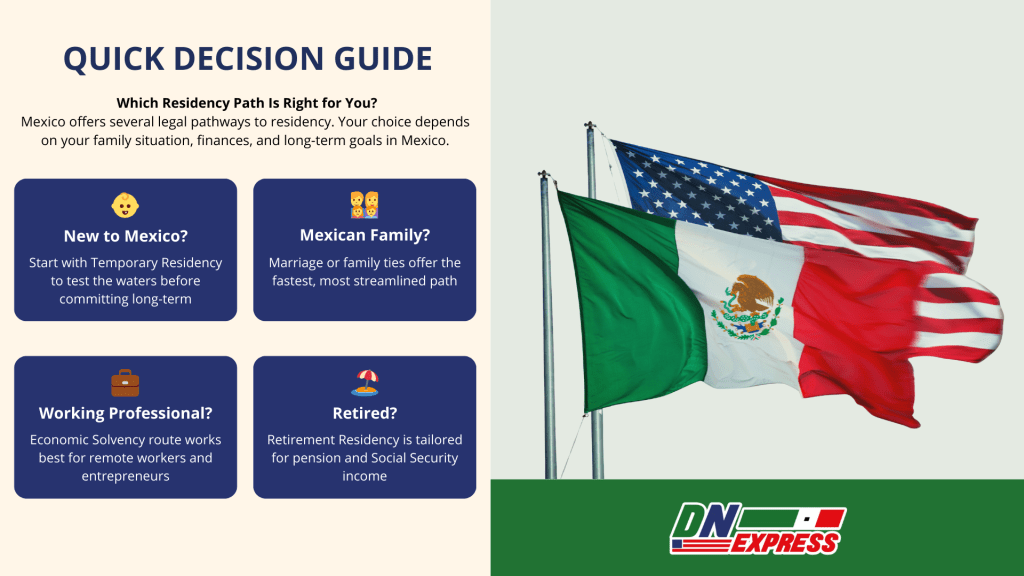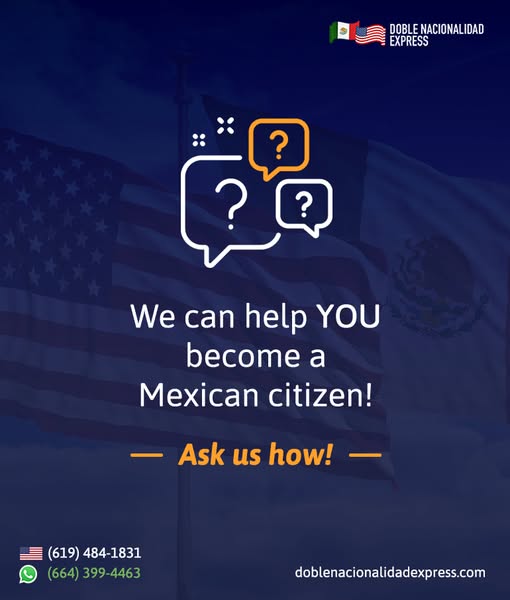
U.S. citizens can get residency in Mexico through family ties, marriage, economic solvency, retirement income, or property ownership. The process can take weeks to months, depending on your case.
With the right guidance, residency opens doors to healthcare, travel, and eventual citizenship.
Whether you're seeking to retire affordably, reconnect with your roots, or secure new opportunities, Mexico offers multiple residency paths.
Each route, family-based, financial, or investment, has unique requirements and timelines. The good news?
With the right legal support, you can avoid the frustration many face at consulates and move forward with confidence.
Our binational attorneys handle every step for you, remotely, quickly, and without the red tape.
If you've ever felt stuck or rejected before, this experience happens to many people. We've helped thousands of U.S. citizens finally secure their residency and even citizenship.
If you want the full breakdown, including costs, timelines, and which option fits your situation best, keep reading.
Residency Options in Mexico: What You Need to Know

Mexico offers several legal pathways to residency. Which one is right for you depends on your family situation, finances, and long-term goals:
Temporary Residency (1–4 years)
Ideal for those starting out. Granted for up to four years, with the option to transition into permanent status later.
Allows you to live, work (with permission), and open bank accounts in Mexico.
Permanent Residency
A direct path if you qualify through family ties (e.g., being the parent of a Mexican citizen) or by meeting higher financial thresholds. Offers indefinite stay without renewals and broader rights, including work authorization.
Residency by Marriage
Spouses of Mexican citizens can obtain a simplified path, often skipping heavy financial requirements. Many couples choose this route to establish family life in Mexico.
Residency by Economic Solvency
Requires proof of consistent income or savings, commonly through bank statements, retirement accounts, or investments. This is one of the most common paths for retirees, remote workers, and entrepreneurs. Current financial requirements vary by consulate and exchange rates.
Retirement Residency
Specifically for those with pension or retirement income. Applicants show fixed monthly deposits from Social Security or a private pension to prove long-term financial stability.
Step-by-Step: How the Process Works

Getting residency in Mexico involves a few key steps. While the exact process can vary by consulate or case type, here's the standard flow:
1. Collect Your Documents
Gather your valid passport, recent photos, proof of financials (bank statements, pension deposits, investments), and civil documents such as birth or marriage certificates. Apostilles or translations may be required.
2. Apply at a Mexican Consulate or With Attorneys
Most applicants start at a Mexican consulate in their home country. An attorney can review your eligibility, prepare documents, and even handle tricky cases that were previously denied.
3. Receive Your Temporary Residency Visa
Once approved, the consulate issues a single-entry visa in your passport. After entering Mexico, you must exchange it (canje) at the immigration office for your residency card, valid up to 4 years. You'll also receive an FMM document for entry tracking.
4. Transition to Permanent Residency or Citizenship
After holding temporary residency (usually four years), you may switch to permanent status. Permanent residents can later apply for Mexican citizenship if they meet the naturalization requirements.
Frequent Worries
Beyond the official requirements, real applicants often share their frustrations and unanswered doubts online. Here are some recurring insights from community discussions that typical guides don't address:
Dual residency vs. dual citizenship confusion
Many people mistakenly believe residency automatically leads to citizenship. In reality, residency is a legal status to live in Mexico, while citizenship requires naturalization or family lineage.
Inconsistent consulate rules
Applicants report drastically different requirements depending on which consulate they visit. Some demand additional months of bank statements, others request apostilles or even in-person parental consent.
Questions people frequently ask online:
- “Can I apply if my spouse is Mexican but we live in the U.S.?”
- “What if I was rejected once, do I have to wait before reapplying?”
- “Would it be faster if I hire a lawyer in Mexico instead of the U.S.?”
- “What happens if I don't meet solvency but own property?”
- “Do I lose U.S. benefits like Social Security if I get Mexican residency?”
These questions highlight the gaps between official rules and real-world experiences. Working with licensed attorneys who handle both U.S. and Mexican law is often the safest path forward.
Fear of consulate rejection
After waiting months for an appointment, the idea of being denied is one of the biggest stress points.
Often, rejections happen due to missing documents, not because you're ineligible.
Uncertainty about changing income rules
Financial thresholds can shift from year to year or even vary by consulate. Applicants worry about preparing statements, only to find out requirements have changed.
Worry about losing U.S. citizenship or benefits
Many fear that residency in Mexico might cancel U.S. rights. The truth is you keep your U.S. citizenship and benefits like Social Security while living abroad.
Mistrust of scams and shady providers
Horror stories of “paper pushers” or agencies that disappear after payment make people nervous. Choosing licensed attorneys is critical to protect your documents and identity.

Why Work With DNExpress Instead of Doing It Alone?
When it comes to residency and citizenship, the process is full of hidden traps. Thousands of families have chosen Doble Nacionalidad Express to guide them:
✅ No consulate visits needed – we handle the entire process remotely, saving you months of waiting and travel.
✅ Licensed Mexican attorneys – every case is reviewed by professionals trained in both U.S. and Mexican law.
✅ We fix “impossible” cases – even if you've been rejected before, our team specializes in turning no into yes.
✅ Affordable and transparent – clear pricing, payment plans, and no hidden fees.
Trying to do it yourself often leads to:
❌ Rejected applications from missing apostilles, mistranslations, or name mismatches.
❌ Lost time and money traveling to consulates or Mexico for documents.
❌ Permanent errors in legal records that can delay or block future applications.
With us, you're not getting a service, you're gaining peace of mind that your residency or citizenship will be handled correctly, quickly, and legally.
Take the Next Step Toward Your Residency
Your path to living legally in Mexico doesn't have to be confusing or stressful. With the right guidance, you can move forward confidently, without wasting months on consulate appointments or risking costly mistakes.
Schedule a Free Case Review today and find out if you qualify.
Call or Message Us on WhatsApp for answers in minutes from our bilingual legal team.
We've helped thousands of families secure their residency and citizenship. Now, it's your turn.

Preguntas frecuentes
Can U.S. citizens get residency in Mexico?
Yes. The most common paths are through family ties, marriage to a Mexican citizen, or economic solvency (income or savings).
How much money do you need for residency?
Requirements typically range from $2,600–$3,500 in monthly income or $45,000+ in savings, depending on the consulate and exchange rates. Learn more about economic solvency requirements.
How long can you stay in Mexico without residency?
U.S. citizens can remain up to 180 days on a tourist permit (FMM). Stays beyond that require residency.
Can I retire in Mexico?
Yes. Many retirees qualify through Social Security or pension deposits, which meet the monthly income thresholds.
Can I buy property with temporary residency?
Yes. You can purchase property anywhere in Mexico. In restricted coastal or border zones, this is done through a fideicomiso (bank trust).
Can I keep U.S. citizenship if I become a resident?
Yes. Residency does not affect your U.S. citizenship, and Mexico allows dual nationality for those who later naturalize.
How long does the residency process take?
From consulate appointment to receiving your residency card in Mexico, the process can take 4–12 weeks, depending on availability of appointments and INM processing times.
Do I need to live full-time in Mexico to keep residency?
No. Residency status is maintained by renewing on time. However, if you want to pursue citizenship, you'll need to prove physical presence in Mexico over several years.
What documents are required?
Most applicants need:
- A valid passport
- Recent photos
- Proof of financials (bank statements, income deposits, or pension)
- Civil documents (birth or marriage certificates, often with apostilles and translations)
What if I don't meet the financial requirements?
Other routes exist, such as marriage, family ties, or property ownership. We also help correct documents and explore alternative paths if you've been denied before.
Can I work in Mexico with residency?
- Temporary Residency: You must request a work permit.
- Residencia permanente: Work is automatically authorized.
What happens if I was rejected before?
You can reapply at another consulate or fix the issues that caused the denial (often paperwork errors). DNExpress specializes in turning rejections into approvals.
Do I lose U.S. benefits like Social Security if I move to Mexico?
No. U.S. citizens can still receive benefits while living abroad. Many retirees collect Social Security and live comfortably in Mexico.



